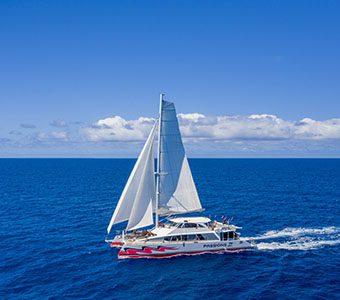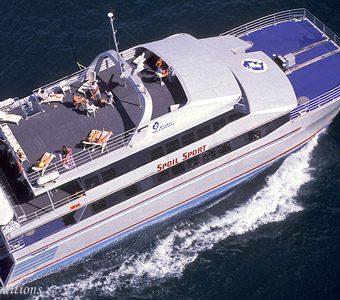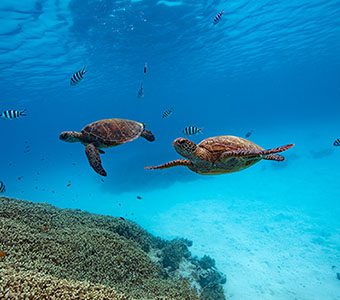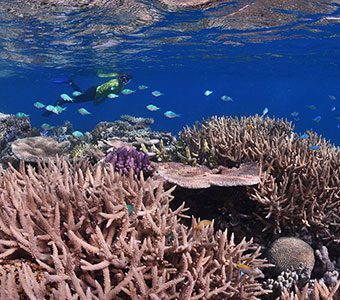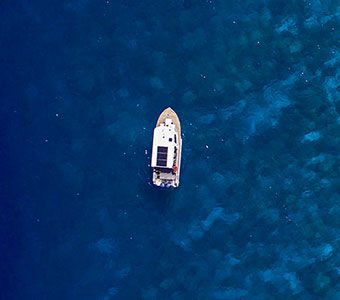This year, 17 Great Barrier Reef tour operators are set to take to the water to help conserve and protect this natural wonder in a new conservation initiative, with funding in excess of $3.2 million from the Australian Government.
The initiative will see operators take part in reef health and impact surveys, grow and out-plant coral to help restore local reef sites, remove macroalgae, and help control coral-eating crown-of-thorns starfish outbreaks.
For the marine tourism operators involved, the program provides some relief from the challenges the pandemic has caused the industry and helps to support jobs while ensuring regular monitoring and ongoing protection of the Reef. The program, a collaboration between scientists, tour operators, and conservationists, will be carried out at 243 reef sites from the northern parts of the Reef to Lady Elliot Island at the southern tip.
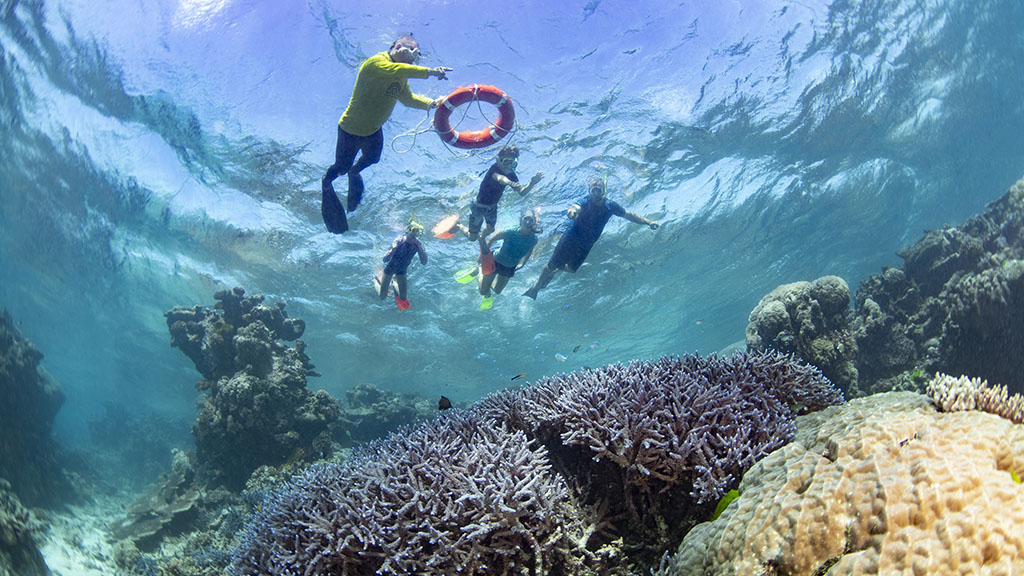
So, what can you do to help future-proof the Great Barrier Reef?
We can all play our part in helping to safeguard this natural wonder (and our planet) for generations to come – no matter where in the world we are. Here are ten ways that travelers can help nurture nature, both from the comfort of home, and the next time you travel to the reef:
1. Adopt a Coral
The Reef Restoration Foundation’s Coral Crusader program grows coral in an underwater nursery, from tiny finger-sized babies to large-scale coral colonies. For as little as $50 you can adopt a coral (or purchase it as a gift). There’s also the option to buy a coral branch, coral tree or sponsor a whole nursery, comprised of 10 coral trees. The team are on a mission to plant 25,000 new corals on the Great Barrier Reef by 2021. After 6-12 months of growing under the tender love and care of scientists and volunteers, the coral grafts from the nursery are re-attached to the reef.
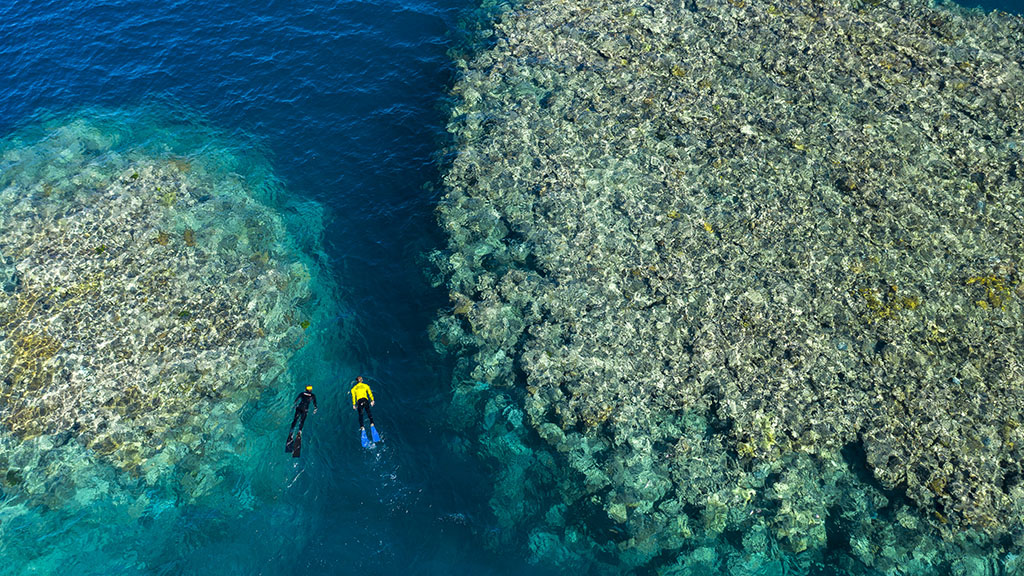
2. Play to Protect
The Great Barrier Reef Foundation recently launched a ‘Kids Corner’ to bring future generations along for the ride. This interactive microsite has been curated to inspire the young and young at heart to learn more about the Reef and the amazing animals that depend on it. Spot the difference, tune into recommended documentaries or try your hand at cleaning up as many plastic bags as you can in 30 seconds – but don’t disturb the jellyfish!
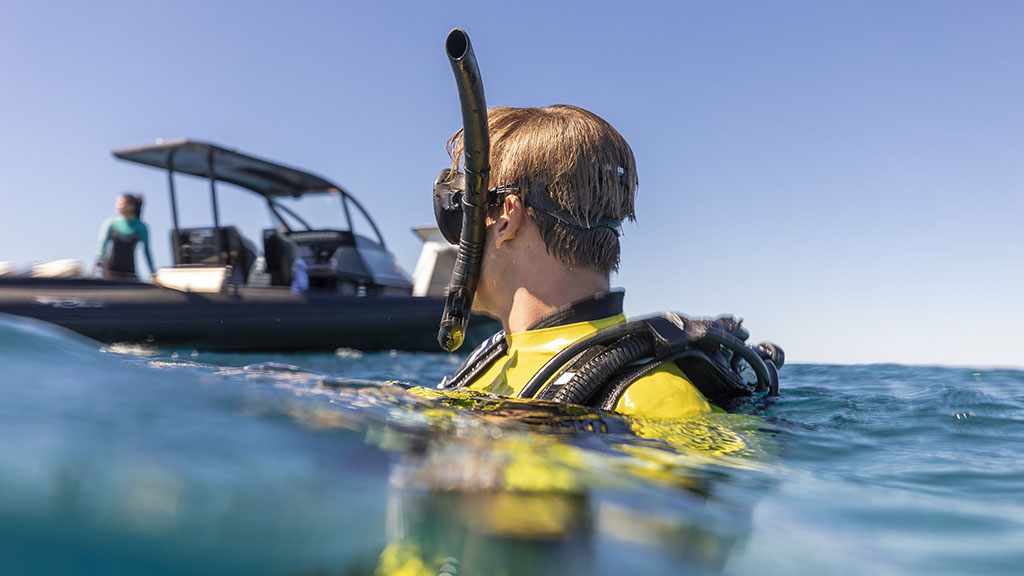
3. Become More Eco-Conscious
Making small changes in our day-to-day life will have a positive flow-on effect on our environment and therefore the Great Barrier Reef. Turning lights off before we leave a room, bringing our own reusable coffee cup, using eco-friendly products, ditching single-use plastics and reducing plastic usage are just some examples of making small changes that can have a lasting impact. Other eco-friendly actions include investing in renewable energies, planting an edible garden, using chemical-free cleaning products, reducing leftover food waste, and joining a local clean-up event.
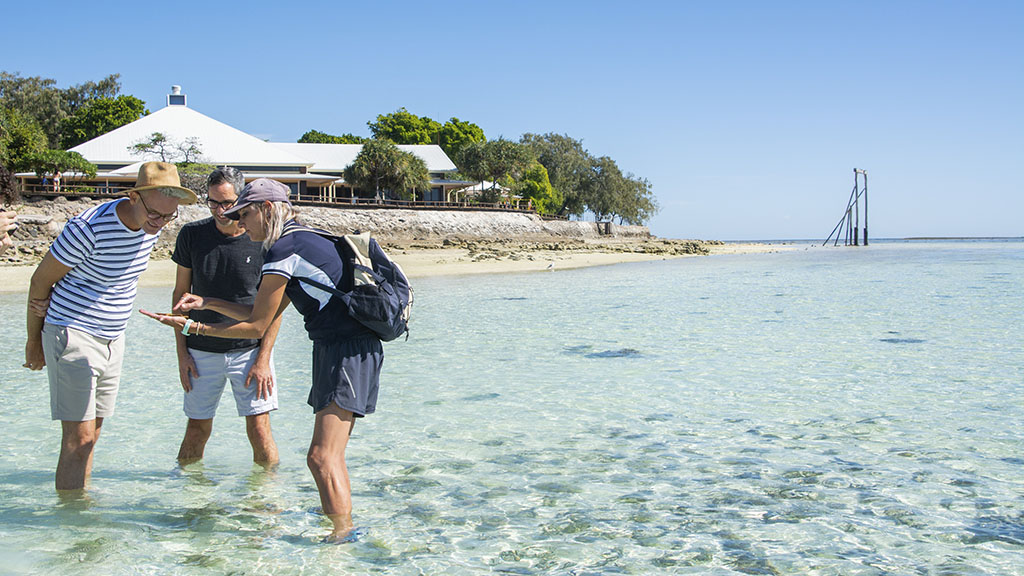
4. Learn about the Reef
Taking a deep dive into the Great Barrier Reef’s underwater world is one of the simplest ways to understand why protecting and conserving it is so important. Visit queensland.com and the websites from organizations such as the Great Barrier Reef Marine Park Authority, Reef Check Australia, and the Great Barrier Reef Foundation to learn more about the different species that call the Reef home, the threats impacting reefs around the world, and the many projects underway to help protect the Great Barrier Reef. School up on all the important species that keep our oceans beautiful and healthy with a visit to Townsville’s Reef HQ, home to the largest living coral reef aquarium in the world and the Australian Government’s national research and education program.
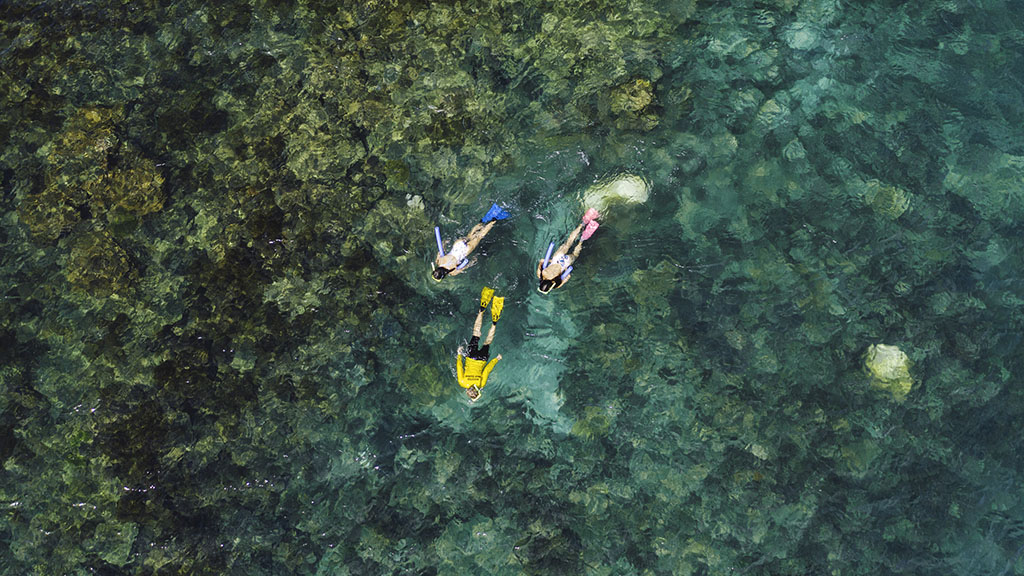
5. Become a ‘Citizen’ of the Great Barrier Reef
Citizens of the Great Barrier Reef connect people from around the world in an effort to drive change that helps protect the Great Barrier Reef (and our planet). Sign up and make a pledge for positive change in your day-to-day life – this could be to bring their own bag, ditch plastic bottles, say ‘no’ to plastic straws, and carry their own cup. The portal tracks your progress and shows the collective positive impact these actions have on the environment.
6. Contribute to Local Projects
By contributing directly to the projects led by the Great Barrier Reef Foundation, the Reef Rainforest Research Centre and Citizens of the Great Barrier Reef, you can be sure that 100 percent of your donation goes to helping the Great Barrier Reef.
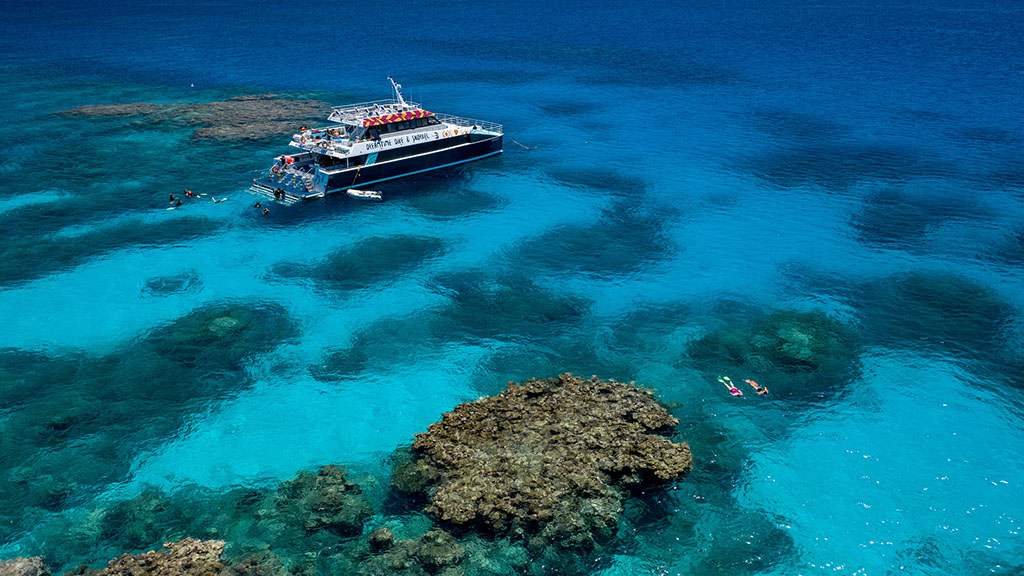
7. The Great Reef Census
Citizens of the Great Barrier Reef is calling on ocean lovers across the globe to help analyze images from 150 reefs that were surveyed during the Great Reef Census in 2020. Anyone can participate from anywhere in the world and it involves the simple task of ‘colouring in’ where you see coral, sand, and rubble on the images. This results in a map marking elements on the reef which ultimately helps researchers assess the reef’s health.
8. Fall in love with the Great Barrier Reef
Visiting the Great Barrier Reef is one of the best ways you can help in its conservation. Seeing and learning about the Reef up close in all its glory inspires visitors to help protect it. And each visitor contributes to the Reef’s ongoing protection from the moment they arrive by paying a $6.50 per day Environmental Management Charge. Choose an eco-certified or accredited business by looking out for the Ecotourism Australia Advanced Accreditation, EarthCheck or Green Leader logos, and seek out operators who employ a Master Reef Guide. Master Reef Guides are highly trained reef interpreters that allow travelers to the Reef to see it pretty much the same way that a marine biologist does, providing rich, factually correct, and important information.
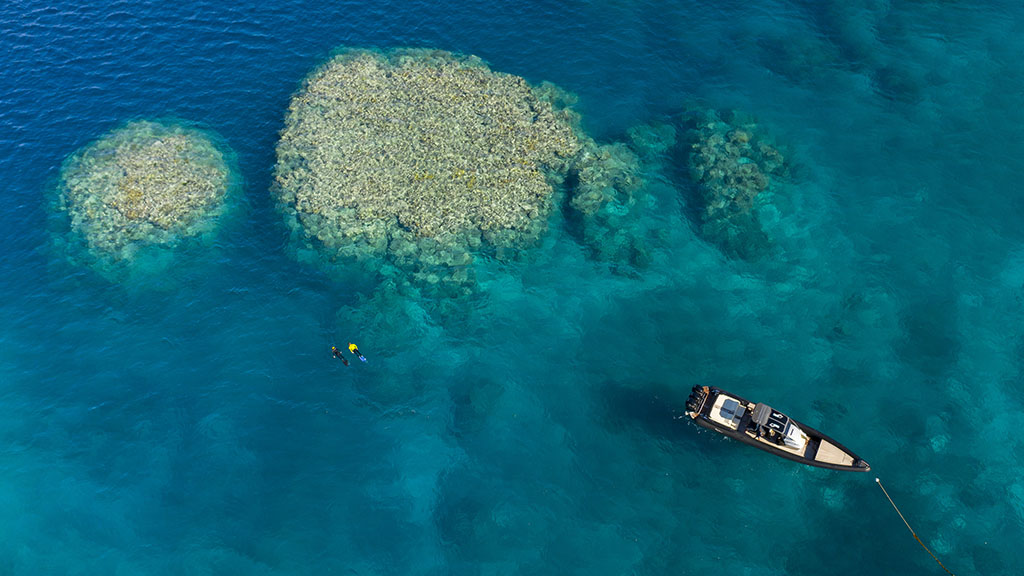
9. Volunteer on The Reef
Join one of the many Great Barrier Reef volunteer programs offered by foundations and not-for-profits such as Earth Watch, Ocean 2 Earth Volunteers, International Volunteer HQ, that support a range of reef care initiatives – from assisting researchers with reef monitoring to collecting marine debris, and assisting turtles in their rehabilitation. Or perhaps join the Eco Barge Clean Seas crew – a crew of bona fide reef saviours who run regular missions to collect marine debris around the islands of the Whitsundays. They also host clean streets and creeks programs and coastal clean-up days to prevent man-made litter from entering the marine environment.
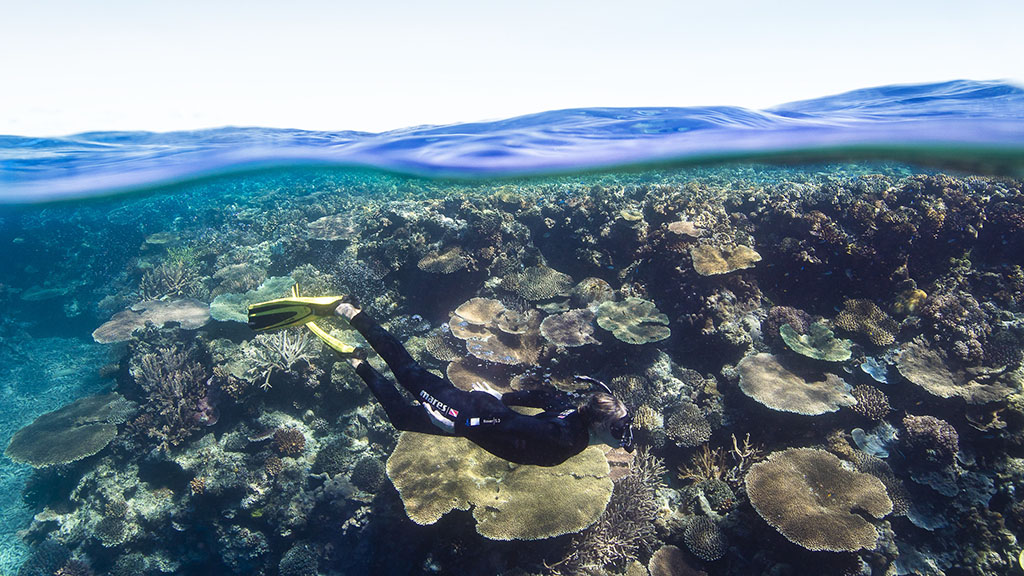
10. Keep an Eye on the Reef
Anyone visiting the Reef can contribute to citizen science projects through the Eye on the Reef and ReefSearch programs, which help monitor the Reef’s health. Download the Eye on the Reef App and share photos of what you have seen out on the Reef (including wildlife, marine pollution or pests like crown-of-thorns starfish). This information about reef health, marine animals and incidents is collected to understand the bigger picture. The ReefSearch program run by Reef Check Australia is a reef identification and observation program that allows divers and snorkelers to document their observations during a 10-minute dive or snorkel.


